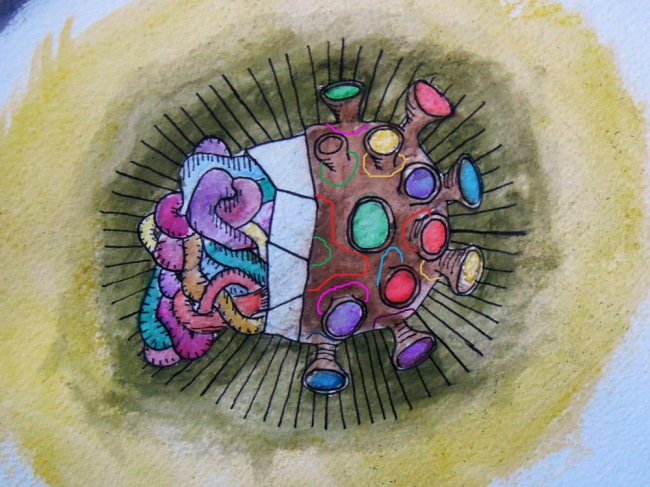I have been experimenting with oogoo a bit now and again over the past year or so and I thought I would report my experiences with it.
Oogoo is silicone caulk mixed with corn flour. Silicone caulk is activated by the moisture in the air which means it has a very long cure time unless it is used very thinly. Adding cornflour allows the moisture in the air to quickly penetrate the caulk even when it is inches thick resulting in a cure time of between 15 minutes to 2 hours depending on the ratios you use. More corn flour means a faster cure.
There are a lot of benefits to using oogoo instead of mould making silicone.
- Silicone caulk is very cheap. You can find tubes of it in budget shops for £1 to £2 for 300ml. Corn flour is even less expensive and increases the total volume of your material. Casting silicone can be about £10 for 300ml.
- Oogoo mixes to create a putty which makes the whole process very easy. You can press the oogoo around your model with your hands and it is pretty safe. Silicone caulk gives off acetic acid as it cures which is relatively harmless.
- The fact that it is a putty means there is no risk of bubbles.
- It is possible to hand model oogoo like Plasticine although the fast curing time does make things difficult. I have some examples below.
There are instances where a pourable liquid silicone would be more ideal for mould making. I have experimented with mixing white spirit with the oogoo to make it a liquid to some mixed results, but even when you get it right the resulting mould is probably always going to be too soft to use. I would definitely recommend buying proper mould making silicone if you need to pour it.
My first oogoo test was just a hand modelled doodle, and my default shape is generally something with 5 way symmetry. I tried mixing in pigment, and I believe in this case I used a small amount of Indian ink. It set very quickly using a roughly 1:1 ratio of caulk to flour. The centre the pointy bits around the edges and the ring in the centre were added from a second batch, and the ring in the middle was just a sausage bent around into a loop. It set much too quickly so there is a very visible join. I used caulk with no flour as a glue to bind the second batch to the first. The third batch I mixed in some purple acrylic ink to add some simple decoration. It’s not the prettiest thing in the world, but it was mostly about testing the materials.
The result is completely opaque because Indian ink and Acrylic ink are very opaque mediums.

The second thing I tried was some basic casting. I pushed oogoo into some empty Rennies packets to try and get some nice smooth rounded square shapes. I wouldn’t recommend that if you want perfect rounded squares because it was impossible to get out the little dents in the packet no matter how hard you pushed the oogoo in. I experimented with different pigments here again. Yellow food colouring, blue acrylic ink and I think some kind of food colouring that didn’t have very strong pigment on the grey ones.
I arranged them on a sheet of plain oogoo. The result is very floppy. I could see potential here for designs for cosplay outfits, but it would be better to cast the whole thing as one sheet, and to make a really nice hand carved plaster mould rather than empty Rennie packets.
You can see the translucency of the oogoo when I hold it up to the window, and the difference between the opaque purple pigment and the transparent yellow pigment. I think there is potential for creating pieces to be stretched over light boxes.
These weren’t designed to be pretty. It was more just a test of what can be done with oogoo.
I will talk about some more advanced experiments with oogoo that I tried later in my next post.





















